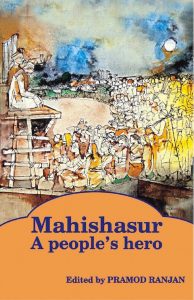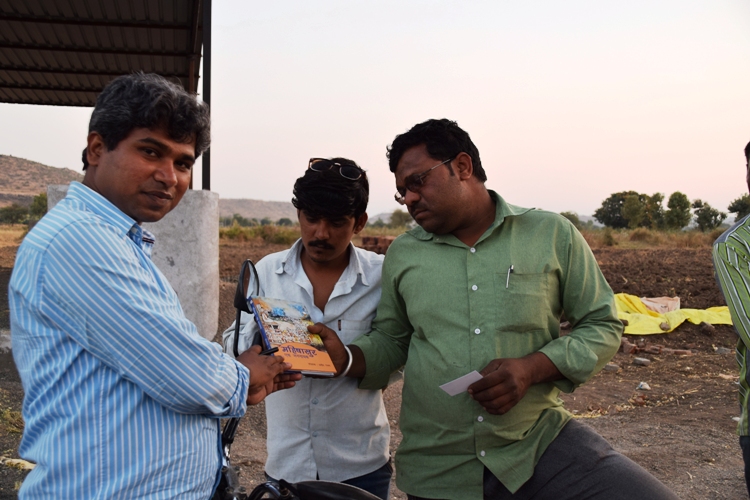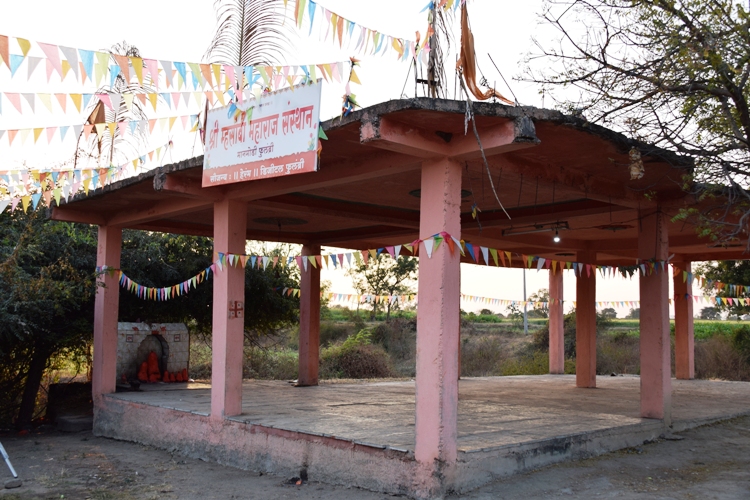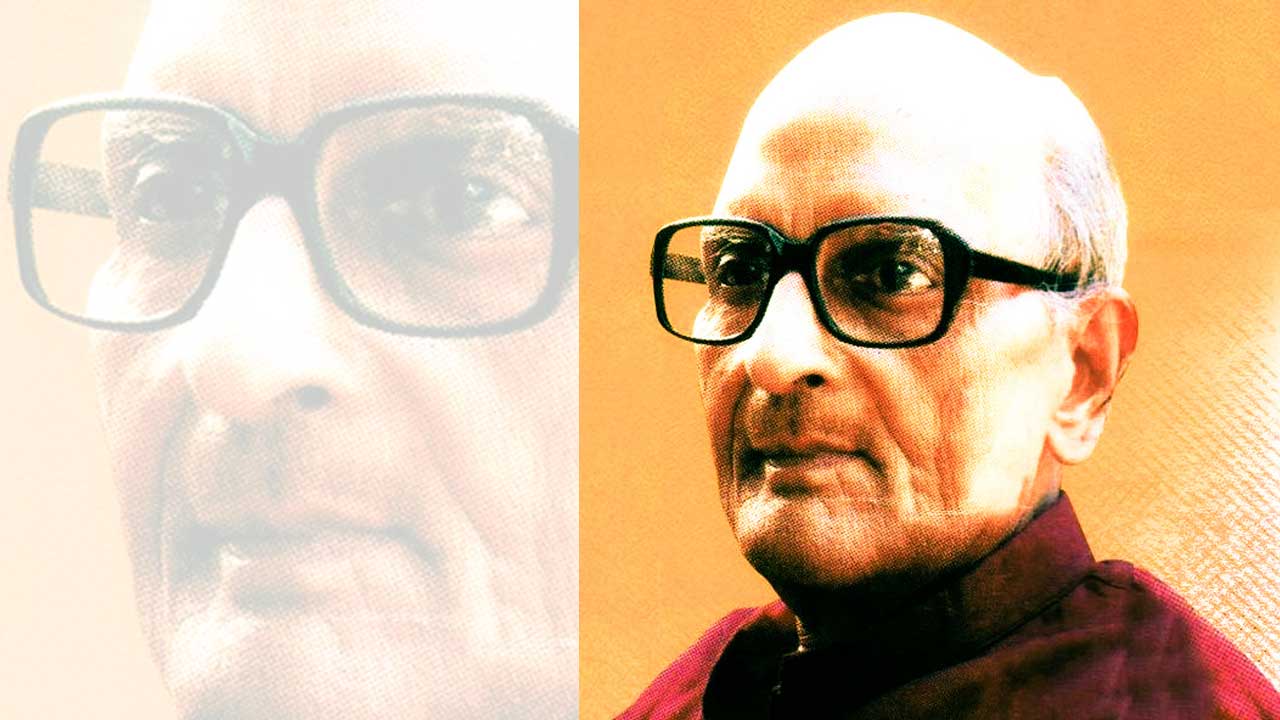“Until lions have their own historians, tales of the hunt shall always glorify the hunter”, goes an old African saying. Historian Gyanendra Pandey has very rightly pointed out that history is a compilation of the memories of the past and that what is compiled and what is left out often depends on the intellectual commitments of the compiler. The myths, and the festivals and traditions based on them, play an important role in determining the direction the socio-cultural history takes. No myth is born out of a vacuum; somewhere or the other, it is rooted in reality. Occasionally, the reality disappears in the maze of fantasy and exaggeration. But if the reality cannot be seen, it does not mean that it does not exist. A closer scrutiny can help us discover it. The myth of Mahishasur Mardini Chandi Durga is a manifestation of the historical conflict between the Aryans and the non-Aryans. The unprecedented growth of Dalit consciousness and assertion over the past two to three decades has led to some Dalit intellectuals attempting a re-rendition of the myths as part of the movement to take on the brahmanical cultural domination. In JNU, this process of re-rendition began with the holding of Mahishasur Martyrdom Day.
ALSO READ: Demythologizing Mahishasur
 On 24 February 2016, in a speech in Parliament that lasted more than half an hour, union human resource development minister Smriti Irani launched a diatribe against JNU, calling it “the den of anti-nationals”, and tried to justify the oppression unleashed by the state machinery in Hyderabad Central University and JNU. She also waved a pamphlet issued at the time of Mahishasur Martyrdom Day observance in JNU in 2014 as an evidence of the university having become a den of sedition. Before reading out the pamphlet, she sought forgiveness from god for the sin she would be committing by uttering the blasphemous words. The pamphlet was an alternative reading of the Durga-Mahishasur narrative. Now, the lions have their own historians who are fighting the glorification of the hunters. The pamphlet says that Mahishasur was a just and powerful Asur (non-Aryan) ruler and when the Surs (Aryans) found it impossible to defeat him in battle, they hired a woman to deceitfully kill her. Later, the Aryans named the woman Chandi Durga and started worshipping her.
On 24 February 2016, in a speech in Parliament that lasted more than half an hour, union human resource development minister Smriti Irani launched a diatribe against JNU, calling it “the den of anti-nationals”, and tried to justify the oppression unleashed by the state machinery in Hyderabad Central University and JNU. She also waved a pamphlet issued at the time of Mahishasur Martyrdom Day observance in JNU in 2014 as an evidence of the university having become a den of sedition. Before reading out the pamphlet, she sought forgiveness from god for the sin she would be committing by uttering the blasphemous words. The pamphlet was an alternative reading of the Durga-Mahishasur narrative. Now, the lions have their own historians who are fighting the glorification of the hunters. The pamphlet says that Mahishasur was a just and powerful Asur (non-Aryan) ruler and when the Surs (Aryans) found it impossible to defeat him in battle, they hired a woman to deceitfully kill her. Later, the Aryans named the woman Chandi Durga and started worshipping her.
As we know from social media, the Asurs, who are one of the aboriginal tribes, and many other tribes and deprived communities, have been commemorating Mahishasur on the Durga Puja day, but the mainstream media never took notice. They say they are descendants of Mahishasur. The issue kicked up dust when some groups of students in JNU began observing Mahishasur Martyrdom Day publicly. This interpretation of history by the historians of the lions was unacceptable to the hunters.
The book under review, Mahishasur: Ek Jannayak (its English translation is titled Mahishasur: A People’s Hero), is a compilation of articles on the Mahishasur-Durga myth written over the last five years by different people. The lion’s historians who want to challenge the history of lions and present an alternative interpretation have taken the first step.
The observance of Mahishasur Martyrdom Day by different Dalit, Tribal and OBC groups in different parts of the country over the last four years has become a part of the cultural movement against Brahmanism. When, on 25 October 2011, Mahishasur Martyrdom Day was celebrated in JNU for the first time, few would have imagined that it was going to be the precursor of a movement spreading like wildfire all over the country. In less than four years, the martyrdom day not only whipped up a social movement in the country but also became the foundation of cultural unity between Tribals, OBCs and Dalits. According to the book, “This year (2015), Mahishasur Martyrdom Day or Mahishasur Remembrance Day was celebrated at more than 300 locations in the country.”
ALSO READ: Durga, Mahishasur and caste politics
Why re-rendition of a mythological tale? Pramod Ranjan, the editor of the book, has a logical answer to this question. “To understand the implications of any story … one needs to deconstruct it. If you deconstruct any brahmanical mythological story, you will find that it admits the injustices and deceits perpetrated by the heroes and heroines without demur, portraying them as acts of valour to glorify the characters. It is clear that for the Brahmins, everything that the powerful did was moral. They didn’t have the concept of justice.” In every era, the myths and the festivals based on them were used to establish ideological, cultural dominance. “This re-rendition is aimed at establishing the concept of justice and of humanist morality – to prove that ultimately truth prevails over power.” Many scholars like Rahul Sankrityayan have categorically stated that the Sur-Asur conflicts are the mythological representations of the wars between the Aryans and non-Aryans. “Descriptions of wars and deceits in mythology suggest that Mahishasur was a valiant sociopolitical leader of that section of society whose life values were different from those of the Surs (Brahmins/Aryans). They were more powerful, resourceful and prosperous than the Surs. They were the rulers of their kingdom and the Surs were finding it impossible to defeat them. Ultimately, the Surs used a woman to trick and conquer them.”

From time immemorial, the ruling classes have been using cultural dominance to establish economic and political dominance. Marx writes in his German Ideology: “The ideas of the ruling class are in every epoch the ruling ideas. That is, the class which is the ruling material force of society is at the same time its ruling intellectual force.” Capitalism does not produce only goods. It also produces ideas. For the annihilation of casteism, it is necessary for an identity-based Dalit consciousness to spread and the annihilation of casteism is imperative for the democratization of social consciousness. Myths and mythological stories provide water and manure to brahmanical cultural dominance. Pramod Ranjan rightly points out that the “re-rendition of the Mahishasur’s tale is sounding the bugle of a cultural revolution against Brahmanism”. As has been stated above, the lions have rejected the history of the hunters and have started writing their own.
Re-rendition
After some informative introductory articles on the book and its subject matter, re-rendition begins with a forceful and well-researched article by Premkumar Mani titled “Kiski Puja Kar Rahein Hain Bahujan?” (“Who are the Bahujans really worshipping?”) “In India too there is a long history of worshipping Shakti. But this history is not so simple … The symbol of Shakti evident in the Indus Valley Civilization is not the same one we see after the arrival and settling of the Aryans. The centres or symbols of Shakti kept changing with the pre-Vedic, early-Vedic, Vedic and post-Vedic periods. As the influence of Aryan civilization increased, its various forms also came to light … There was no Shakti worship in the civilization of these Dravidians. In any case, in advanced civilizations power is not an object of worship. It was the arrival of the Aryans that set the stage for Shakti Puja. The peaceful, civilized Dravidian cow-rearers of the Indus Civilization were destroyed and pushed back by comparatively crueller horse-riding Aryans. Dravidians would not have given up easily. The battle between “gods” and “demons” is the same Aryan-Dravidian battle. The following article is also by Premkumar Mani, in which he raises a valid question: “Hatyaon Ka Jashn Kyon?” (“Why this celebration of death?”)
Although there are differences in the interpretations of the symbols of Mahishasur and Durga in these alternative readings, there is a consensus that Mahishasur was a non-Aryan and that he was a popular, pro-people king, or the leader of the indigenous inhabitants – the Asurs. When the Aryans (Surs) could not defeat him in war, they used a woman to kill by deceit. In her research-based article “Santhal Samharak Durga” (“Durga the Santal Slayer”), Madhusree Mukerjee arrives at the conclusion that the Durga-Mahishasur myth relates the battle between Austro-Asiatic tribes and the Dravidians. It is entirely possible that before this battle, Durga might have been made a part of the mainstream society, thus becoming the symbol of the dominant culture. Braj Ranjan Mani’s article “Dalitbahujan Drishtikon Aur Mahishasur Vimarsh” (“Dalitbahujan perspective on the Mahishasur debate”) launches a frontal attack on the brahmanical historical perspective. “Its foundational text is ‘Devi-Mahatmya’ (Glorification of the Goddess), a long poem in the Markandeya Purana, written between the fifth and seventh centuries AD. This warrior-goddess takes to a violent high the tradition of earlier supernatural enchantresses such as Mohini (Vishnu in disguise) and Tilottama (a celestial beauty) who merely seduce the Asuras (‘non-Aryans’) so that the Suras (‘Aryans-Brahmans’) can overpower them.” This well-argued article raises a very valid question: Why did the Indian Brahmins write only Puranas, which, in contrast to historical documents, are overflowing with imagination and which more than exposing the truth, hide it?
ALSO READ: Hurt Mahishasur descendants to file case

It is a historical truth that Brahmanism, in order to perpetuate its dominance, laced history with mythical, mythological and otherworldly characters and supernatural, magical events, thus halting the economic and intellectual development of society. For Brahmanism, knowledge was what served its vested interests and established its monopoly over knowledge by restricting education to a few. To ensure universal acceptability of its version of knowledge and history, it was necessary for Brahmanism to destroy other symbols and definitions of knowledge. It is pertinent to note here that it was when Pushyamitra Shung murdered the last Mauryan Emperor and appropriated the Magadha Empire that the process of destroying Buddhist treatises, institutions and symbols and materialistic knowledge system began. Well-known thinker Ram Puniyani, in his article “Durga, Mahishasur Aur Jati Ki Rajniti” (“Durga, Mahishasur and caste politics”), admits that interpreting the Puranas is a daunting task and claims that the city Mysore has been named after Mahishasur. He quotes Marx to explain the brahmanical interpretations of myths. It is always the dominant castes and classes that create and sponsor the dominant discourse. He says these alternative interpretations are a part of the discourse against brahmanical dominance. These re-interpretations emerged as the oppressed classes launched the struggles for their emancipation.
The book presents an account of the functions held in different parts of the country to commemorate Mahishasur in the wake of the much-talked-about event in JNU in 2011 and the discourse on them in the media and on social media. Premkumar Mani’s article “Bharat Ko Samjho Modiji” (“Understand India, Modiji”) urges the PM to come out of the lac house of falsehood. This must feel like looking for a pearl in a desert, for the brahmanical mythology is serving his interests. He will never come out of this lac house. “The dominant class uses its mythology to strengthen its stranglehold; those who are left behind reinterpret their mythology to put up cultural resistance,” writes Mani. “The dominant class asks us to worship Rama; we are reminded of Shambuk whose head was severed by Rama just because he wanted to gain knowledge.”
Pramod Ranjan wants to protect this cultural revolution from Brahmanvadis and Marxists. In my view, the simultaneous raising of the slogans of Jai Bhim and Lal Salaam after Rohith Vemula was forced to take his own life is a sign that a cultural revolution is in the offing. In the two articles on the JNU students’ movement published in Samkaleen Teesri Dunia – Bharat mein McCarthyvad: JNU Aur Deshdroh (April 2016) and JNU Ka Vichar Tatha Sanghi Rashtronmad (May 2016), this writer said that the students’ movement based on the slogans of Jai Bhim-Lal Salaam is the beginning of a cultural revolution against Brahmanism and neo-liberalism. The newly constituted Bhagat Singh-Ambedkar Students’ Organization is the symbolic beginning of the ideological journey of this new revolution. I fully agree with Ram Puniyani when he says that the alternative interpretations of myths are indicative of the rise of a new Dalit consciousness. The deprived have realized that the brahmanical scriptures that have kept them enslaved for centuries need to be deconstructed. The new interpretations of the myths are a part of this process. As dominance is economic, political and cultural too, it should be resisted on all these areas. But this resistance should not be fractured. It should be united. The raising of Jai Bhim and Lal Salaam in the same breath represents the unity of the struggles for social and economic justice. In Gujarat and Punjab, the Dalit movement has met with some degree of success because the struggle for dignity was combined with the struggle for land. The leftists and the advocates of social justice have to realize that in India the ruling castes and the ruling class were the same. As Bhagat Singh had said, it is the spreading of class-consciousness that will sound the death knell of the casteist and communal ideologies.
Title: Mahishasur: Ek Jannayak
Editor: Pramod Ranjan
Publisher: The Marginalised, Sanewadi, Wardha, Maharashtra – 442001 M: 9968527911
Second edition: Rs 125
(The English edition of the book is published under the title Mahishasur: A People’s Hero. It is available on Amazon.)





